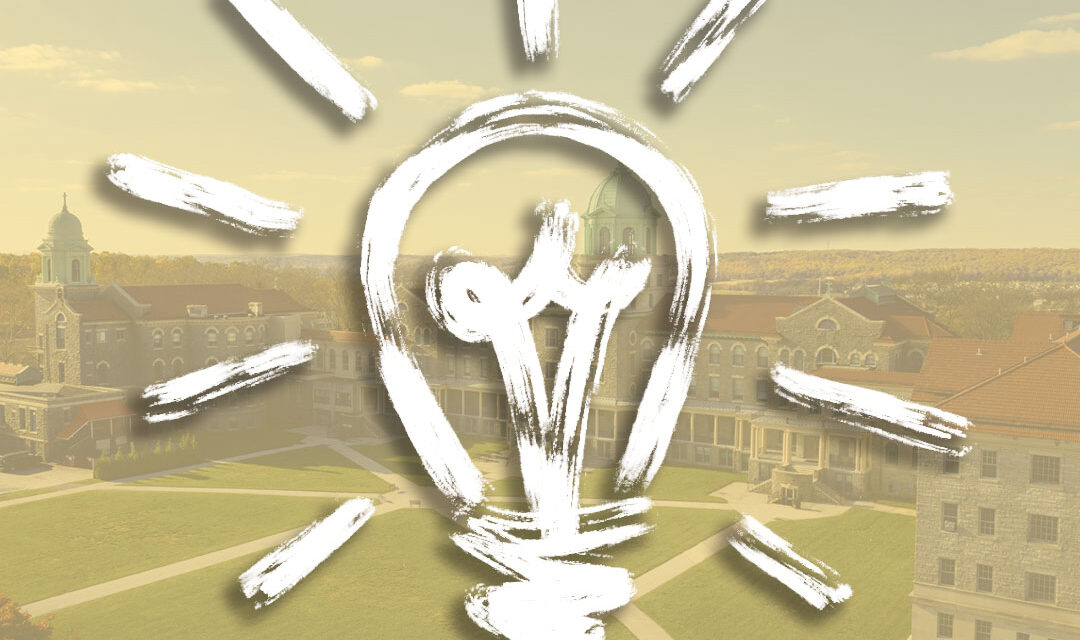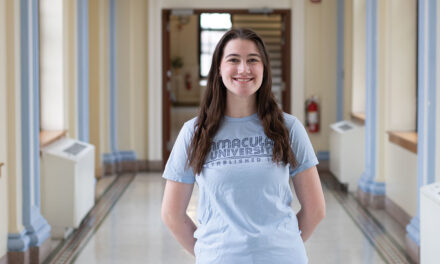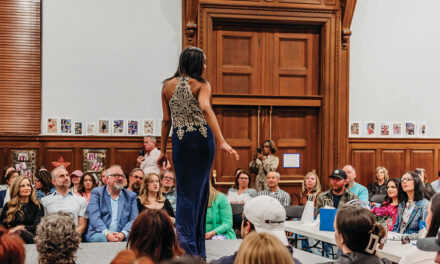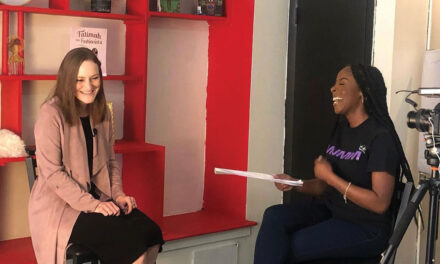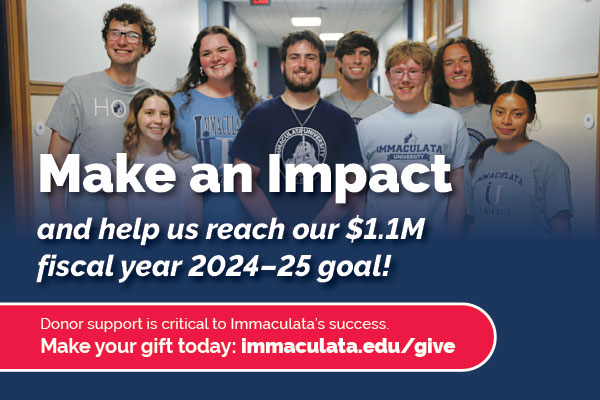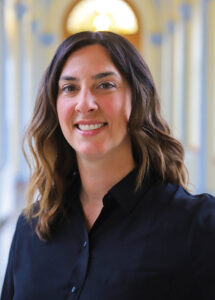
Elaine Perignat
Even if you’re not an artist or an inventor, you’ve probably had to adapt to cover a coworker’s responsibilities when she calls out sick. Or you’ve figured out what to make for dinner given the constraints of time, ingredients on hand and your kids’ picky eating. Maybe you were given a task you’d never done before, and you worked out a plan to complete it. All these tasks require innovative problem-solving.
You can learn to be more creative, says Perignat, who specializes in creative cognition. “Learning it, like anything else, takes practice. So some of what I try to do is give my students tools and strategies so that they can feel what it’s like to think creatively,” she says. She makes her classes on entrepreneurship, innovation and leadership as engaging as possible, aiming for “an active classroom full of idea-sharing, curiosity, and really pushing past conventional ways of thinking and viewing the world.”
Want to boost your creativity? Here are some insights and strategies Perignat emphasizes in class.
1Identify small, everyday ways in which you use creativity.
In her Innovation and Leadership class, a requirement for the M.S. in Strategic Leadership, Perignat assigns her students to journal each week about a creative victory. That victory could be something as small as finding a new way to use technology to save time or something more significant, like starting a small business and developing a clever name.
Perignat explains that researchers describe different levels of creativity, from the “Big-C” eminent creativity that genius inventors display to the “mini-c” day-to-day experiences we have when we learn something new and useful. “We can’t all be Steve Jobs. And that’s OK; we don’t need to be.” But, she adds, “we all are creative problem-solvers.”
2Generate lots of ideas first; evaluate them later.
Perignat says some studies show that the first one-third of ideas people develop tend to be less useful than the ones they think of after having adequate incubation time. “Usually when we’re driving home or in the shower, we get our most creative ideas, because our brain has time to kind of relax and work in the background,” Perignat says.
She advises students to brainstorm many possibilities first, even seemingly silly ones, and not to be too quick to evaluate them, which could cause them to stop short of developing better options. “Withholding judgment is one of the premier elements of divergent thinking and creativity,” Perignat says.
At an organizational behavior conference this past spring, Perignat and a colleague from Villanova University presented strategies for leading productive team brainstorming sessions, such as asking individuals to generate ideas separately from the group first, then inviting them to share their ideas anonymously.
“The culture of the workplace is the foundation of any successful team brainstorming session,” Perignat and her co-presenter said. “Do employees believe that their ideas are valued? Do they feel safe to be able to share ideas without judgment? If one employee’s idea is selected and fails, are they fearful
of losing their job/position? The manager and team leaders must help establish an environment of trust, respect and openness among team members.”
3Push past conventional answers to practice divergent thinking and get unique ideas.
Perignat asks her students to participate in the multiple uses test, which researchers often administer to measure creativity. She gives students one minute to write down as many uses of a paper clip as they can think of, resulting in about five to seven ideas. Then Perignat challenges them to think about paper clips from different perspectives—their metal or plastic elements, their durability and flexibility, various possible sizes or numbers of paper clips used together, the potential to melt them down to create new shapes and the metal’s ability to conduct heat and electricity.
Perignat then gives students another minute to write down more uses. “This is a safe space; I want you to be as wacky and crazy as you can,” she tells them. They scribble feverishly, thinking of 15 to 20 new ideas this time.
When Perignat challenged her students to devise paper clip uses she has never heard before, Josh Weikert, Ph.D., ’23 M.S. said, “Snowshoes for a hamster!” Perignat and the class burst out laughing. “You win!” she said.
Weikert, who earned his master’s in strategic leadership at Immaculata while also serving as an associate professor at IU and director of the honors program, says he enjoyed this and other activities Perignat assigned. “They made it easy to see how we tend to ‘hit a wall’ in terms of creativity, but that we can push through it and find still more ideas.”
To help undergraduate students in her entrepreneurship course generate ideas, Perignat asked them to think of 10 problems they encounter in their lives. They then chose one as the basis for a product or service they wanted to develop. They created a business plan and pitch to potential investors, with an analysis of their target market, competitors and marketing opportunities. The students developed a range of innovative business ideas, such as a credit repair app with financial advice based on big data and artificial intelligence, a solar battery pack for electric vehicles, a tablet that connects to customers’ wardrobes and chooses outfits, a swimwear shopping service with a virtual fitting room and an app for amateur photographers to easily edit and sell photos.
Throughout the semester, Perignat helped her students refine their ideas. “No entrepreneur gets it right the first time,” she reassures them. “Failure is part of the process … not the end result.”
She points to her research and publishing work as an example. “When I send out articles to peer-reviewed journals, I don’t expect them to be accepted straight up.” Editors and scholars note ways Perignat can improve her work. “Great, now I have feedback,” she says. “So the next draft of a manuscript I send off will be markedly better.”
4Collaborate with a diverse team to get more innovative ideas.
One key to obtaining valuable feedback, Perignat says, is by building a diverse team with people from different cultures and disciplines and with various skills. Research shows “the necessity of cognitive diversity within a team to provide unique perspectives to a problem,” she shared in her organizational behavior presentation.
In the graduate leadership course Perignat taught earlier this year, she helped students explore ways to build cultures of innovation in their workplaces by motivating, supporting and rewarding their teams for developing creative and profitable ideas. “Innovation is not about solo genius, it’s about collective genius,” said Linda Hall, professor at Harvard Business School, in a video Perignat assigned to the class to watch. “Our task [as leaders] is to create the space where everybody’s slices of genius can be unleashed and harnessed and turned into works of collective genius.”
“There’s actually strength in the creativity of others,” says Seante Warren ’21, ’23 M.S., one of the students in the graduate leadership class and a member of the highway patrol unit for the Philadelphia Police Department. “I used to be more focused on my own level of creativity, but now I value others’ input,” he says.
Dennis Szweda ’21, ’23 M.S. appreciated the diverse ages of students in the class and enjoyed learning new ways to use technology from his younger classmates, such as making PowerPoint presentations more engaging with animations, sound and videos. In turn, he drew upon his years of work experience, first in emergency services and now as an analyst for Boeing, to encourage younger students when they gave a presentation and help them feel more confident.
Many of Perignat’s students gain confidence after taking her classes. Some tell her, “I didn’t think I would see myself at this point.”
“I get such a jolt, I get so energized, just seeing students break through and start to let themselves be creative without judgment,” Perignat says.
Creativity Challenge:
Multiple Uses Game
Try your hand at this multiple uses game to see how creative you can be! Submit your ideas by Aug. 20 for Professor Perignat to judge. Winners will receive IU prizes!
You have one minute to brainstorm as many uses of a mystery object as you can think of.
Before you start, here are some tips:
- Break down the key materials that make up the object and consider their characteristics—are they malleable, flammable, biodegradable? Can they float through the air, retain water, dry out, be cut into pieces, etc.?
- Think about things you do throughout the day and how the object could solve some basic problems you encounter in your daily life.
- Pair the object with something else. Imagine how those two things might combine to make something useful.
- Don’t be afraid to come up with some wacky ideas!
Remember, you’ll only have one minute once the page loads.
Ready to start?

